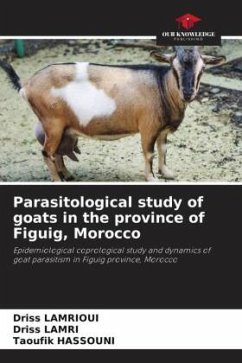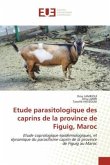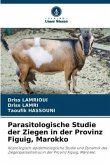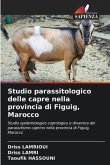A coprological examination carried out on a sample of goats showed a highly diversified internal polyparasitism, with an overall infestation rate of 81% for the local breed versus 66% for the alpine breed, and identified 5 nematodes respectively: Trichostrongylus colubriformis (52.50% and 41.66%), Skrjabinema ovis (42.50% and 30% ),Trichuris ovis (23.33% and 19.16%) , Nematodirus spathiger (18.33% and 13.33%), Haemonchus contortus (15.83% and 14.16%), 1 Cestode Moniezia expansa (19.16% and 17.50%), 1 Trematode: Paramphistomum cervi (20% and 15%) and 2 protozoan Coccidia: Eimeria caprovina (65% and 51.66%) and Eimeria ovina (9.16% and 5%).Overall, the dynamics and biotypological structure of parasitic populations collected by coprology in Capra hircus is marked by a decreasing gradient of infestation from winter to summer. Likewise, a typical spatial distribution according to the conditions and husbandry practices of the circles studied, which are at the origin of the infestation rate and parasite load observed in the Beni Tajjit circles.
Bitte wählen Sie Ihr Anliegen aus.
Rechnungen
Retourenschein anfordern
Bestellstatus
Storno








